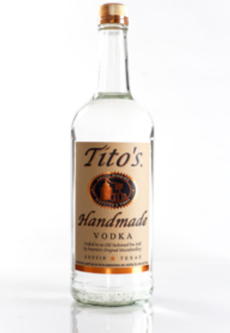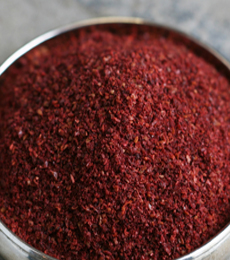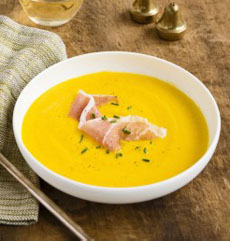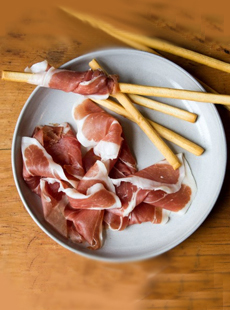|
Yesterday we popped into our local Le Pain Quotidien to meet a colleague for coffee. On the breakfast menu was brown rice pudding, topped with mixed nuts and raisins.
We love rice pudding, so of course, we ordered it: our first “breakfast” rice pudding. It had much less sugar than dessert rice pudding, and, though served at room temperature, was not far removed from other porridge, like Cream Of Rice or oatmeal.
We went online and found a breakfast rice pudding recipe from Tiffany at LiveLearnLoveEat.com.
We also found the recipe below from the folks at Lundberg, the California-based premium rice producer, which uses just 1/2 cup of brown sugar in the entire recipe.
Both recipes are made with cooked rice and are a great way to use leftover rice. Add nuts for protein!
RECIPE: RICE PUDDING WITH BROWN RICE
Ingredients
1½ cups cooked short grain brown rice
3 eggs
½ cup brown sugar
|
|
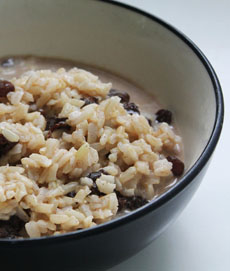
You can justify brown rice pudding: It’s a whole grain! Photo courtesy LiveLearnLoveEat.com. |
|
Optional mix-ins: ½ cup raisins, chopped dates, or other dried fruit—blueberries, cherries, cranberries
¼ teaspoon salt
½ teaspoon vanilla extract
3 cups whole milk
Nutmeg
Optional garnish: nuts (try a mix), shredded coconut
Optional: half and half, heavy cream, whipped cream
Preparation
1. BEAT the eggs; add the sugar and beat until smooth. Add the milk, salt, and vanilla and blend.
2. ADD the rice and the raisins or other dried fruit. Pour into a greased shallow baking dish and sprinkle with nutmeg.
3. SET the baking dish in a pan of hot water and bake at 350°F. After baking for approximately 30 minutes, gently stir the custard to suspend the rice. Continue baking for 60 minutes or until the custard is set (a total of 90 minutes).
4. SERVE warm or cold, with cream as desired. To serve as dessert, you can use whipped cream.
|
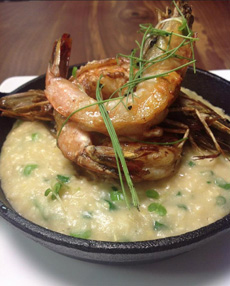
Shrimp and grits. Grits, ground from corn, are also porridge. Photo courtesy Silk Road Tavern. |
|
WHAT IS PORRIDGE?
Porridge is a dish made by boiling ground, crushed or chopped cereal in water, milk, or a combination of both. It is usually served hot, often sweetened, and sometimes savory (the beloved cheese grits are porridge).
Any cereal grain can be made into porridge. Some of the most common in the U.S.:
Buckwheat: kasha
Corn: cornmeal mush, grits, Indian pudding, polenta
Oats: oatmeal
Rice: congee, Cream of Rice
Wheat: Cream of Wheat, farina, Wheatena
Other cereals—flax, millet, quinoa, rye, sorghum, and spelt, for example—are also made into porridge; as are non-cereals like legumes and potatoes. Pease porridge, from the old English nursery rhyme, is made from dried peas.
|
WHAT IS GRUEL?
Gruel is a thinner version of porridge—so thin that it can be drunk, rather than spooned. Historically, gruel has been a staple of the Western peasant diet.
Gruel is often made from barley, hemp and millet. In hard times, chestnuts and even the less tannic acorns of some oaks were ground into flour and made into gruel.
Gruel was a cheap way for officials to feed the poor—most famously described by Charles Dickens’s Oliver Twist, a ward of the parish, who couldn’t even get a second helping of it in the orphanage.
CHECK OUT WHAT’S HAPPENING ON OUR HOME PAGE, THENIBBLE.COM.
|
|



